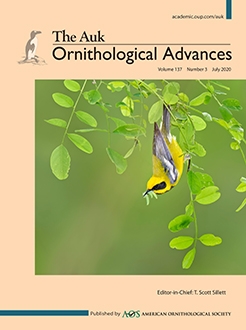Brood parasitism results in substantial costs to hosts, yet not all species eject foreign eggs. Because the costs of mistakenly ejecting one's own eggs are high, selection may favor ejection behavior only if it is unlikely a host will incorrectly eject her own eggs. Eastern Bluebirds (Sialia sialis) are currently subject to relatively low levels of interspecific brood parasitism but still sometimes eject parasitic eggs. Therefore, we tested which visual cues they use to eject foreign eggs with the prediction that only the most dissimilar eggs would be ejected, reducing the likelihood of a female making a mistake. House Sparrows (Passer domesticus), which occasionally parasitize bluebirds, lay eggs that have an off-white ground color with brown speckling. Therefore, to test which colors or patterns allow for discrimination of parasitic eggs, we generated 3-dimensional (3D)-printed model House Sparrow eggs and painted them entirely off-white, entirely brown, half off-white and half brown, or off-white with brown speckling. We then sequentially placed these 4 different model eggs in the nests of Eastern Bluebirds, with each nest receiving all treatments over the course of 4 days. After watching females enter and leave the nest box just one time after placement of the model egg, we found that speckled eggs were ejected half the time (7 of 14 nests), while no other treatment was ejected more than 3 times. Thus, Eastern Bluebird females eject eggs based primarily on color patterning (i.e. a speckled pattern) rather than coloration per se, and that they can do so quickly, as the average female had removed the model egg within 6 min of entering the nest. Because Eastern Bluebirds do not lay speckled eggs, but some brood parasites do (e.g., House Sparrows, Brown-headed Cowbirds [Molothrus ater]), selection may specifically favor ejection of eggs with a speckled pattern, not just eggs that have within-egg color contrasts.
Lay Summary
Some birds (brood parasites) lay their eggs in another bird's (host's) nest; if the parasite is successful, the host ends up doing a lot of extra work raising the parasite's young.
We painted model eggs to test how Eastern Bluebirds (Sialia sialis), which lay blue eggs, figure out which eggs are theirs and which ones were laid by brood parasites.
Eastern Bluebirds rarely get rid of white, brown, or half-white/half-brown model eggs. However, they frequently eject model eggs that are white with brown spots; thus it is the spotting—and not the colors—that indicates to Eastern Bluebirds which eggs are not theirs.






